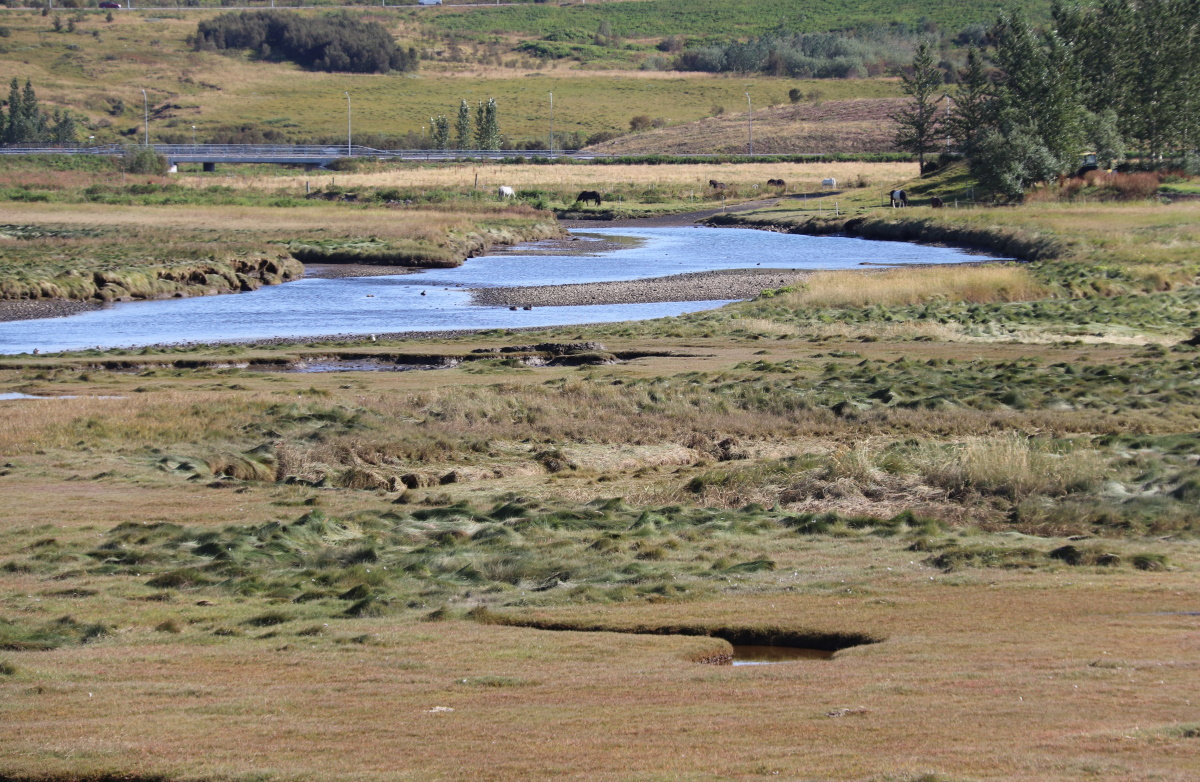Vinna við nýjar heimasíður Umhverfis- og orkustofnunar og Náttúruverndarstofnunar er í gangi. Heimasíða Umhverfisstofnunar er virk á meðan vinnunni stendur. Information in English
Varmarosar, Mosfellsbaer

Varmárósar was protected as a nature reserve in 1980, and the protection was revised in 2012. The aim of the protection is to preserve and maintain the saltmarsh rush (Juncus gerardii) and its habitat, as well as the natural condition of the Varmárósar wetlands and its unusual vegetation. The protection should also ensure research and monitoring of the area’s ecosystem and bolster the area’s outdoor activities, research and educational value. When reviewing the protection in 2012, the Convention on the Conservation of European Wildlife and Natural Habitats (Bern 1979), the Convention on Biological Diversity (1992) and the Icelandic government’s policy were taken into account.
Where Are Varmárósar?
Varmárósar are located within the municipality Mosfellsbær in Kjós. The nature reserve covers an area of 9.76 hectares, and its boundaries lie from the stables by Varmárbakki and the footpath by the horse riding rings out to Varmá and north of Hesthóll out to the estuary.
Points of Interest
At Varmárósar, land, sea and water come together, creating conditions for natural diversity, habitats of many wild plants and animals. The protection ensures the status of the area and its diversity, maintaining a natural site at the edge of the urban area and thus promoting the connection between man and nature.
Vegetation
The nature reserve by Varmárósar contains very fertile soil due to sediment and the special tidal conditions. The area is mostly wetlands, and the dominant species are grass, sedge and scheuchzeria. Saltmarsh rush (Juncus ferardil) grows within the area, close to the tides, a wholly protected and rare plant that has only been found in two places in Iceland, by Varmárósar in 1976 and by Knarrnes in Svalbarðsströnd by Eyjafjörður in 2002. The saltmarsh rush is related to heath rush (Juncus squarrosus) but taller and with more numerous and more delicate flower buds. The saltmarsh rush grows in dense swaths and has creeping rootstalks. Because of the limited spread of the saltmarsh rush, the hypothesis has emerged that it was brought to Iceland by ships in the past.
Birdlife
Leirvogur is on the Registry of Sites of Natural Interest because of its diverse birdlife, varied coastal vegetation and lively beach. Varmá, among other streams, flows into Leirvogur, which is also on the Registry of Sites of Natural Interest and is one of the few thermal rivers in the country. The inlet is a resting spot for migratory birds in spring and fall, a so-called high-tide roost, a place where birds congregate during high tide to rest, before going in search of food when the low tide returns. The most common migratory birds are brant geese, red knots and purple sandpipers, but species diversity is high, and many rare species have been spotted at the Varmá estuary, such as the gadwall, Northern pintail, merganser, Eurasian widgeon, Eurasian teal, falcon, black-tailed godwit and the white-tailed eagle.
Access
The Varmár estuary is located in Mosfellsbær and is accessible all year round. There is a parking lot by the stables and a footpath from there to Hestaþinghóll. Please move with caution within the nature reserve because the saltmarsh rush is sensitive to trampling and birds must be shown consideration during the nesting season.